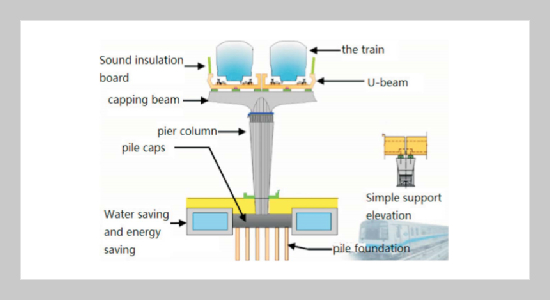Jiahai Liu This email address is being protected from spambots. You need JavaScript enabled to view it.1,2, Dingyong Yu1 , Gang Chen3 , Linhai Lu2 and Wei Zhang4 1Ocean University of China, Qingdao 266100, P.R. China
2Jinan Rail Transit Group Co., Ltd., Jinan 250101, P.R. China
3Shan Dong Province Project Management & Consulting Co., Ltd., Jinan 250001, P.R. China
4Beijing Urban Construction Design & Development Group Co., Ltd., Beijing 100037, P.R. China
Received:
December 13, 2016
Accepted:
May 10, 2017
Publication Date:
September 1, 2017
Download Citation:
||https://doi.org/10.6180/jase.2017.20.3.07
Thin-walled U-shaped beam is widely used in the construction of urban rail viaduct, but finite element analytic theory and experimental study has lagged behind. The finite element calculation indicate that deflection caused by static load and live load is 9.17 mm. The ratio of deflection to span is 1/3271. The state of mid-span section is longitudinal compressive pre-stress. The transverse drawing stress is more than ultimate tensile strength of C55 concrete, reinforcement ratio or section size of transverse reinforcement should be appropriately increased. The static load test shows that the deflection of mid-span section caused by static live load is 7.22 mm. The ratio of deflection to span is 1/4141. Minimum compressive stress of mid-span section is 2.82 MPa. Deflection and stress under various loading case are less than the calculated value of finite element analysis. Obvious crack of U-shaped beam is not founded. Load test shows that U-shaped beam has greater safety reserves compared to design value.ABSTRACT
Keywords:
Urban Rail Viaduct, U-shaped Beam, Finite Element Analysis, Static Load Test
REFERENCES
















